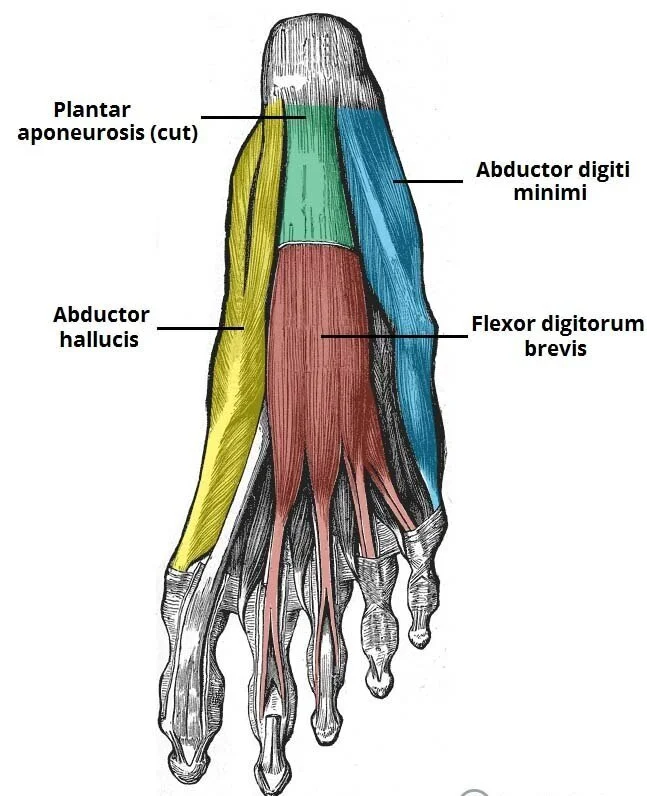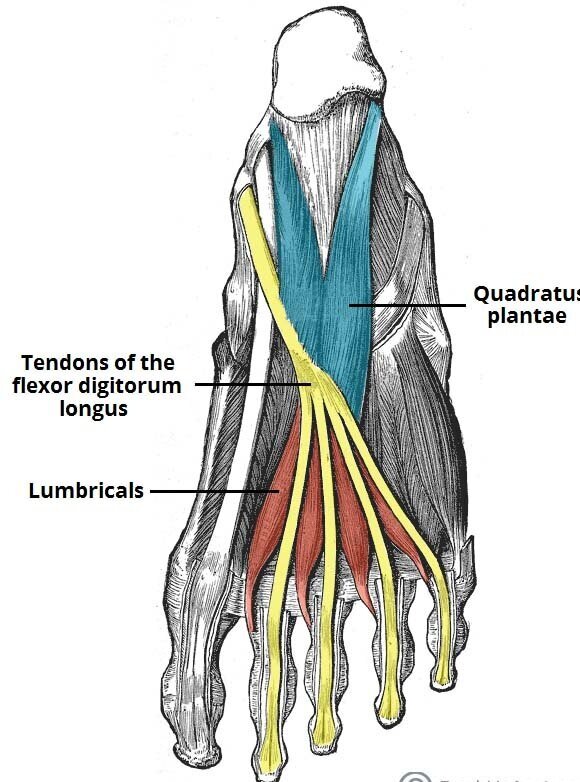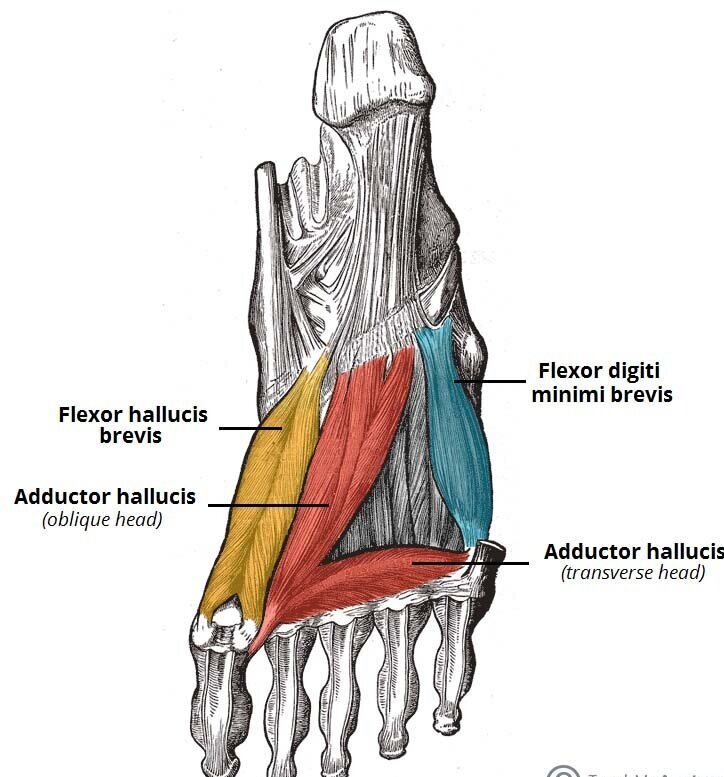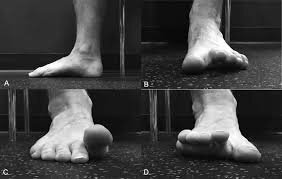It’s a common misconception to think the injury occurred due to the shoe. Why disregard the underlying issue? The underlying issue is typically the inability of the intrinsic muscles of the foot to perform correctly.
The foot intrinsic muscles consist of several smaller muscles located on the bottom of the foot. A recent article in the British Journal of Sports Medicine referred to the foot intrinsic muscles as the ‘core’ muscles of the foot. (1)
Impaired intrinsic foot-muscle function has been linked to various foot conditions. (2) Therefore it would be safer to say “what is the foot doing inside the shoe?” Because improper foot function leads to dysfunctional patterns or running injuries. The intrinsic foot muscles maintain the medial longitudinal arch and aid in force distribution and postural control during gait. (2) So, if these individual muscles are not activated during ground contact, those ground reaction forces cause unwanted stress on ligaments and bone tissue. Often times unwanted stress on tissue leads to stress reactions of muscle tissue or tendinitis symptoms. (1, 2)
So if you're asking yourself “what should I be looking for?” A weakness of these intrinsic foot muscles will be evident when looking at the posture of the foot (the arch will be flat, or the toes will be bent in a hammer or claw toe position) either in a basic standing position or in more subtle cases during dynamic activities such as walking or running. For now, don’t get so concerned about flat feet (pes planus) or high arch (pes cavus), because either foot can have weak intrinsic muscles. (1) However, it’s more common for pes planus feet to have weak intrinsic muscles.
The movement and stability of the arch are controlled by intrinsic and extrinsic muscles. These muscles are seldomly addressed in novice or athletic training plans, so we propose the integration of foot intrinsic core stability exercises. (1) These exercises are usually performed as home-based exercises in conjunction with Dallas Sports Recovery in-office care such as Active Release Techniques (ART), functional and Kinetic Therapy with Rehab (FAKTR), or joint mobilization/manipulation of the foot and ankle.
First, let’s look at the anatomy of the intrinsic foot muscles. There are 10 intrinsic muscles located in the sole of the foot. They act collectively to stabilize the arches of the foot, and individually to control the movement of the digits. All the muscles are innervated either by the medial plantar nerve or the lateral plantar nerve, which are both branches of the tibial nerve.
First Layer
The first layer of muscles is the most superficial: Abductor Hallucis, Flexor Digitorum Brevis, abductor digiti minimi. Figure 1
Second Layer
The second layer of muscles – the quadratus plantae, and the lumbricals. Figure 2
Third Layer
The third layer contains three muscles. The flexor hallucis brevis and adductor hallucis are associated with movements of the great toe. The remaining muscle, the flexor digiti minimi brevis, moves the little toe. Figure 3
Last, the plantar and dorsal interossei comprise the fourth and final plantar muscle layer. These are the tightest muscles due to their depth and length of time-compressed in tight-fitting shoes.



McKeon PO, Hertel J, Bramble D, et al The foot core system: a new paradigm for understanding intrinsic foot muscle function British Journal of Sports Medicine 2015;49:290.
Gooding TM, Feger MA, Hart JM, Hertel J. Intrinsic Foot Muscle Activation During Specific Exercises: A T2 Time Magnetic Resonance Imaging Study. J Athl Train. 2016;51(8):644-650.

